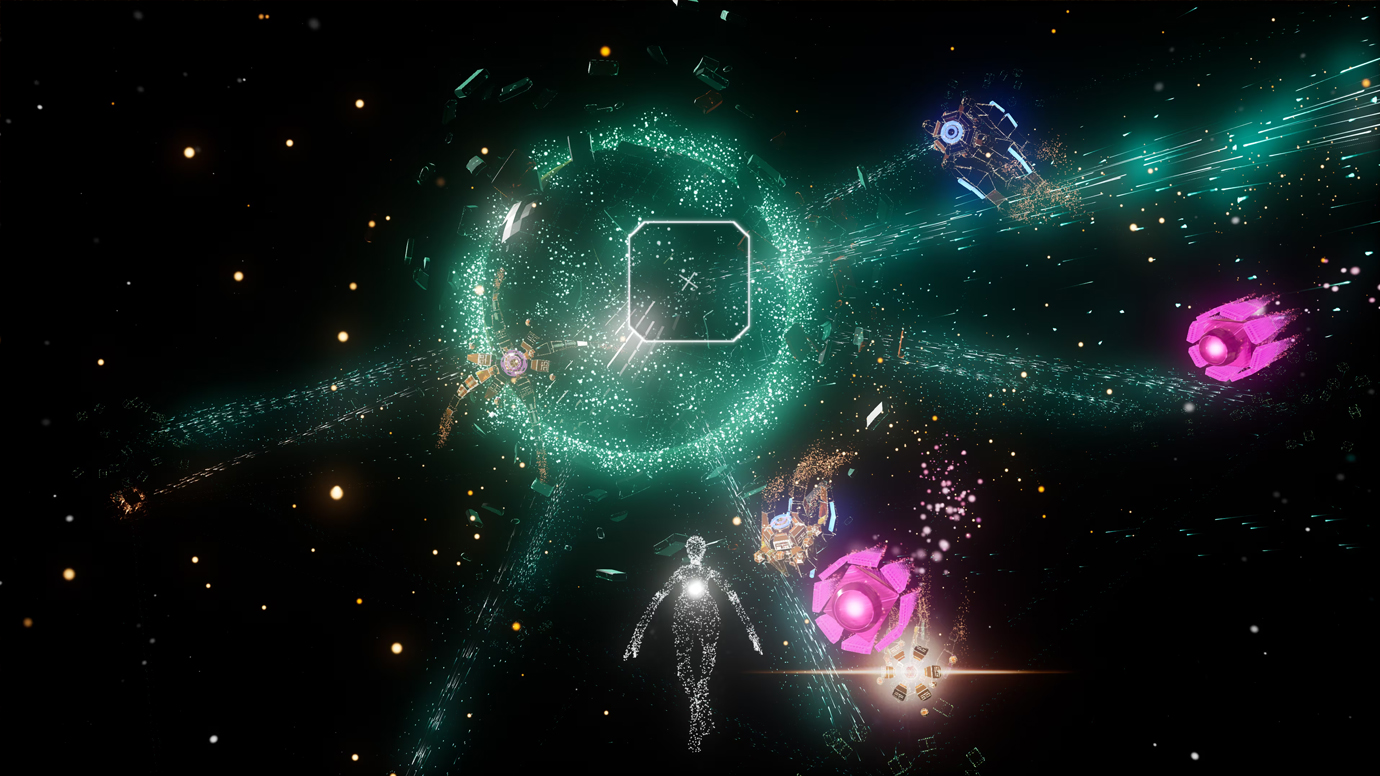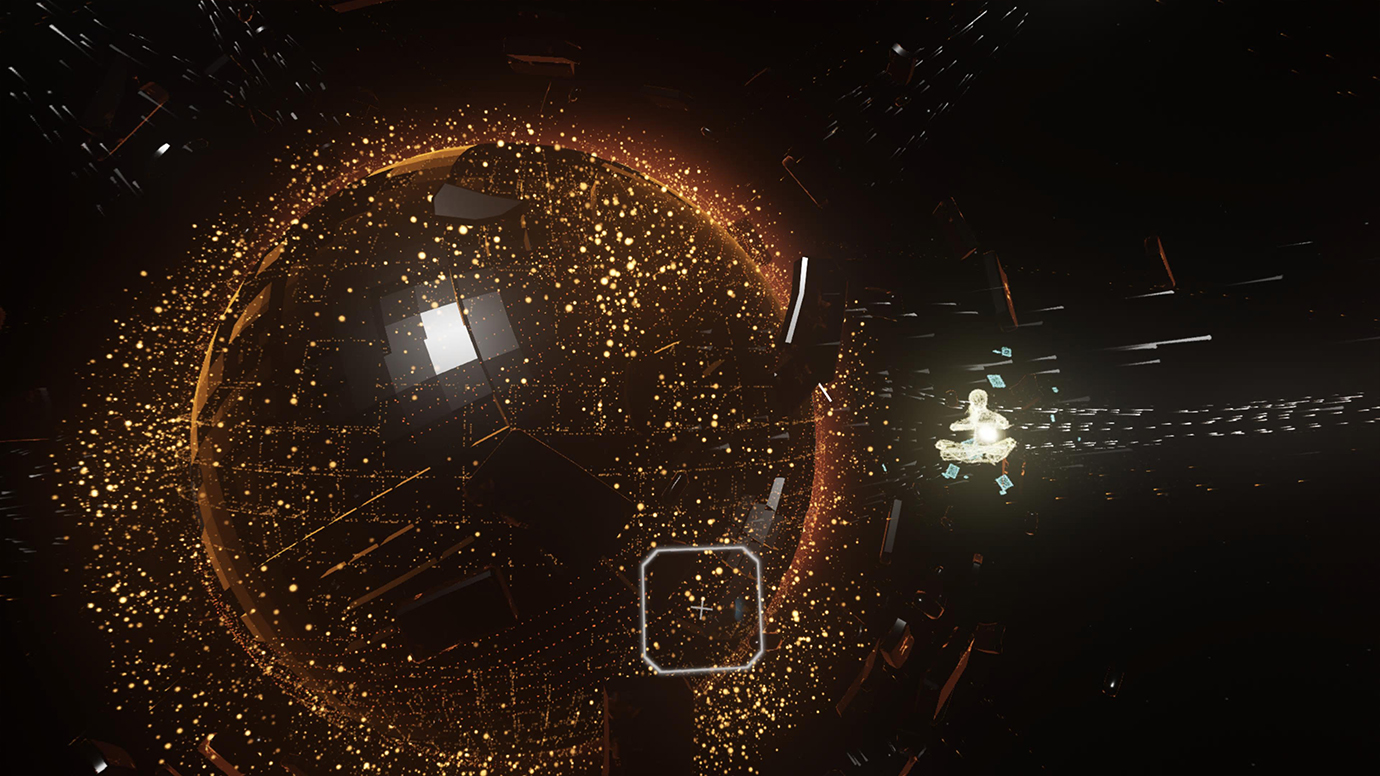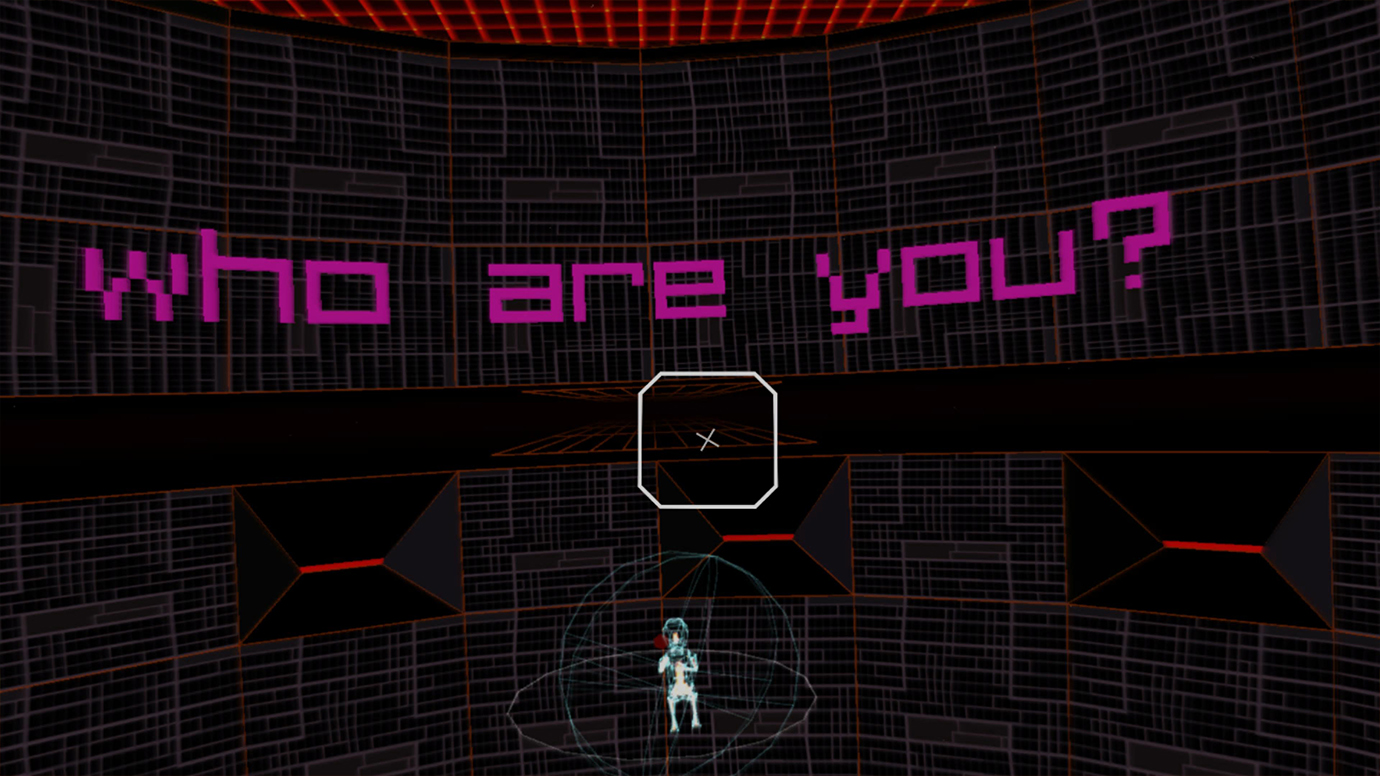
Rez Infinite PSVR2 Review
One of the most fascinating discussions regarding videogames is how new hardware can potentially benefit old software. The most common example of this would be re-releasing classic games that originally released on old consoles to take advantage of the newer console’s upgrades, whether it be improved HD visuals, increased performance, or, more interestingly, reworked controls and perspectives.
The latter has led to ongoing discussions among longtime hobbyists over which version of a re-released, remastered or even remade videogame is the “definitive” version. Leaving aside the debate over visual differences, as such discussions tend to veer wildly into subjective opinions (such as the changes between lighting, textures, music or other artistic changes made between versions of a game) or objective facts (a game that is replicated exactly from the original but enjoys the benefit of higher quality graphics or smoother performance is unarguably the “better” version), the more interesting discussions come in the form of whether a game is better or worse when retooled around a new console’s control scheme and format.
This discussion gained traction during the era of the Nintendo Wii, where Nintendo’s revolutionary concept of motion controls allowed many classic games and game genres to be experienced in a whole new, and potentially better, way. Much like how PC enthusiasts may argue that a mouse and keyboard allows for better precision for certain genres like First Person Shooters then using a traditional controller, the Wii’s motion-based controls brought similar discussions among gaming enthusiasts. While no true consensus could be reached among fans, this did likely pave the way for more variety in how games could be controlled, something that can be seen with today’s machines such as the Nintendo Switch, which allows multiple options to play its library of games both with different controller types and even the option to play on a traditional TV or portable handheld. There is also, of course, the widespread popularity of mobile devices and the endless number of games built around its touch-based format and portable screen, or the limitless possibilities of PC games, in which developers and modders alike can offer all sorts of unique alternatives to replaying classic games.

This all comes back, invariably, to VR. The dream of being able to experience every unique world that videogames have to offer, as well as the sheer convenience of only needing to use one’s head and hands to interact in said world, has been conceptualized and daydreamed for almost as long as the medium has existed. Regardless of how one might feel about the current trends established by Meta, Valve, Sony and other big companies to hawk their expensive novelty items to the public, the fact that we have now reached a period where VR gaming is a real commercial product that can be experienced at home is still worth admiring. But more than that, it creates yet another format to experience our favorite games and game genres with….and in the case of games like Rez, it might even end up the place it was always meant to exist in.
The original Rez, released back in 2001 for the PS2 and Dreamcast, was one of those games that were celebrated for being “ahead of its time”. In the world of consumerism, however, this statement often translates to “did not sell well”, as the game’s unique Tron-esque visuals, thumping rave music and simple-yet-fun gameplay earned high accolades from game reviewers and curious adopters, but did little else to gain the attention of the broader gaming market. And yes, calling the game “Tron-esque” is not without irony, considering the movie itself was also a visual revolution that ultimately bombed in theaters.
Nevertheless, Rez remained one of those “cult classic” games that demanded a sequel, much less re-release, from its devoted fanbase. It took some time, but Rez eventually did get that re-release courtesy of the HD version for the XBox 360 in 2008, nearly seven years after its original debut. It was a serviceable visual upgrade for the time, but it would be another ten plus years until the next big reintroduction, on a gaming platform that was literally impossible to exist in any other time.
As one of the first games to launch alongside the PlayStation VR Headset (now commonly known as the PSVR1), Rez Infinite succeeded in two areas: it was a visual and auditory experience that showcased what the revolutionary console VR headset was capable of, and perhaps more importantly, proved how the VR perspective could breathe new life into classic games; as VR devices also became more consumer-friendly on the PC space, thanks to refined devices like Oculus, we have been seeing more examples of older generation games getting VR facelifts, including official conversions like Resident Evil 4 or fan-modded efforts like Alien Isolation and Doom 3.
Back to Rez, the story and premise is exactly the same as the original game, by which there is practically none of the former and the overall gameplay is carried largely by the latter. The single brief text scrawl at the start of the game talks about a futuristic cyberspace where an A.I. named Eve begins to grow in sentience as it manages and observes the overflowing network of information managed by humans, thus deciding to instead peace out from all that noise and take an eternal nap instead. It is up to the player, which assumes the role of a hacker assuming the role of a flying female avatar, to breach the network and wake up Eve by…shooting it with lock-on lasers, because symbolism or something. Judging by the original timeframe that Rez was created, it was clear that producer Tetsuya Mizuguchi and his team were heavily inspired by Evangelion, Ghost in the Shell and any other influential work that often combined the concepts of virtual reality with existentialism.

While Rez may not succeed in having its players ponder the meaning of life and the overflowing information of cyberspace, it uses its pretty sounds and sights to preach its message in dizzying display. Despite the complexity of its premise, Rez’s core gameplay is deceptively simple as an on-rails 3D shooter with lock-on targeting. Anyone who has played Star Fox or Panzer Dragoon will immediately pick up on the mechanics here, and anyone unfamiliar with either should take just as much time figuring it out; while moving in a fixed direction, players will use the on-screen reticule to lock onto all targets, be they enemies or progressive blocks. Hold onto the button to lock onto a maximum of 5 targets, then let go to fire the volley of shots. Enemies will also occasionally drop health power-ups that can also raise the maximum life of the player, as well as apply a series of cool evolutionary transformations (including various polygonal figures, a buddha statue, and even a disco ball). There are also consumable power-ups that automatically target everything on screen for a few seconds, which becomes downright crucial in order to survive the uncountable waves of enemies flying around….remember, only a maximum of five targets can be locked on at a time, so knowing which targets take priority (such as projectiles flying right toward the player) is a big part of the strategy in this otherwise simplistic shooter.
As serviceable as the gameplay is, the true purpose behind its simplicity is to allow players to bask in the visuals, featuring a decidedly early 2000s interpretation of what a virtual cyberspace would look like, yet somehow still remaining a relevant aesthetic over twenty years later. Rez is and always has been an underground rave party happening in the comfort of the living room, and this experience has expanded tenfold thanks to the new VR perspective. While the PSVR2 version does not add any new content that wasn’t already present in the first VR iteration, it does offer the technical benefits of Sony’s new virtual machine, including clearer 3D visuals, haptic feedback on the controllers and the headset itself, and much better motion controls, including control options where players can use their own eyes and heads to target enemies. What may be the most surprising thing of all is how the velocity-driven visuals, the thumping of the headset and the physical tracking of one’s own head has managed to become one of the least-dizzying experiences so far on PSVR2. This is subjective to the individual, of course, but of the other games covered by this reviewer, Rez proved to be one of the most comfortable experiences, which again is impressive considering how many things are being assaulted to the senses all at once.
About the only drawback to Rez, despite the short and linear length, is with its bosses. While the majority of the bosses are impressive spectacles, especially in VR, they can also prove to be an exercise in frustration, as the sudden increase in intensity can throw players off while targeting their numerous weak points (this is where the aforementioned bombs come in handy). Worse still, even at max evolution, the player character can be defeated easily in just a couple of hits, forcing a complete restart of the entire level. These levels may only last about 6 minutes or so, but the lack of checkpoints can still prove annoying. Another note is that while most of the game can be played in a single seated position, later bosses required physically turning 180 degrees in order to shoot it down as it would hang back and fire at the player’s blind spot.
Just as with the first VR release, Rez Infinite includes a brand new mode known as Area X. This mission is more than just an extra playable level, it is in fact an extended sequence that by all accounts serves as a mini sequel to the original game. Though Area X features the same targeting system of the base game, it also introduces the ability to fly freely in all directions, adding an extra layer of freedom that works in tandem with the VR perspective. Combined with the updated visuals and audio, Area X is by all accounts the biggest VR showcase included in this package, which is all the more tragic that it can be completed in under 15 minutes.

Short and sweet as the experience may be, Rez Infinite is still a highly recommended VR game that begs repeat playthroughs, and will undoubtedly prove a dazzling experience for even the most skeptical VR critics (even the ones with potentially weak stomachs). More importantly, the PSVR2 version is undoubtedly the best, most definitive version of the cult classic game, making it one of the few unironic instances where a title truly was “ahead of its time”.
